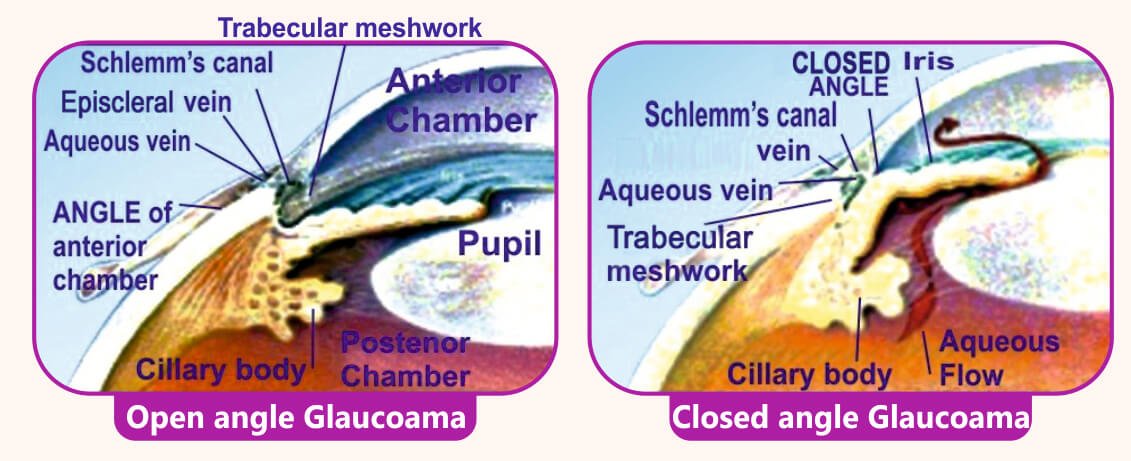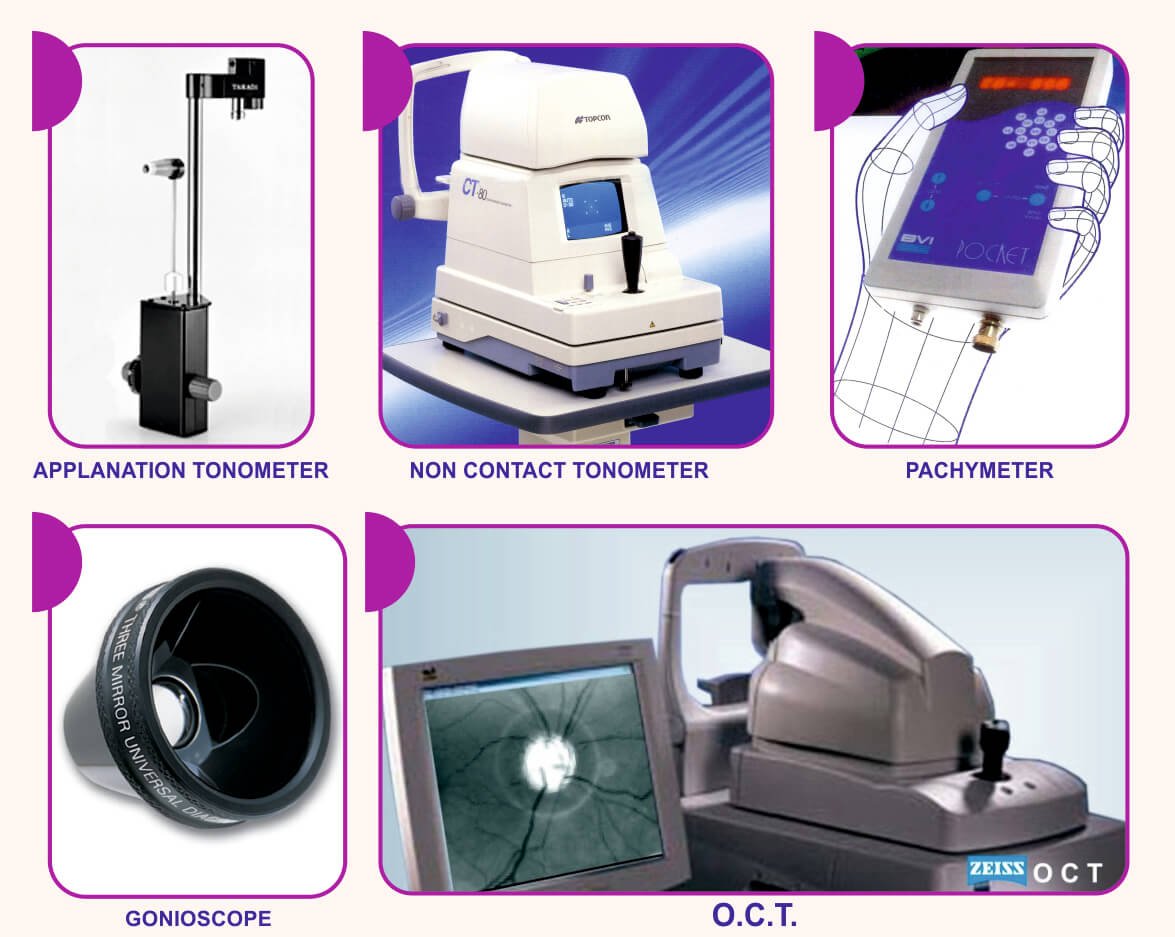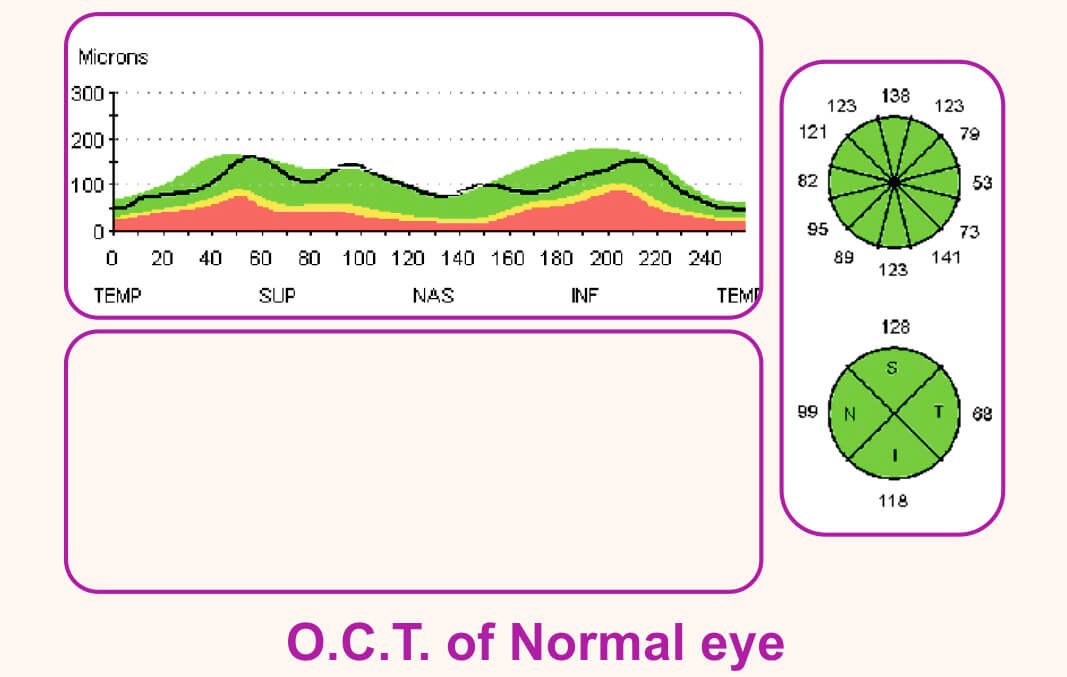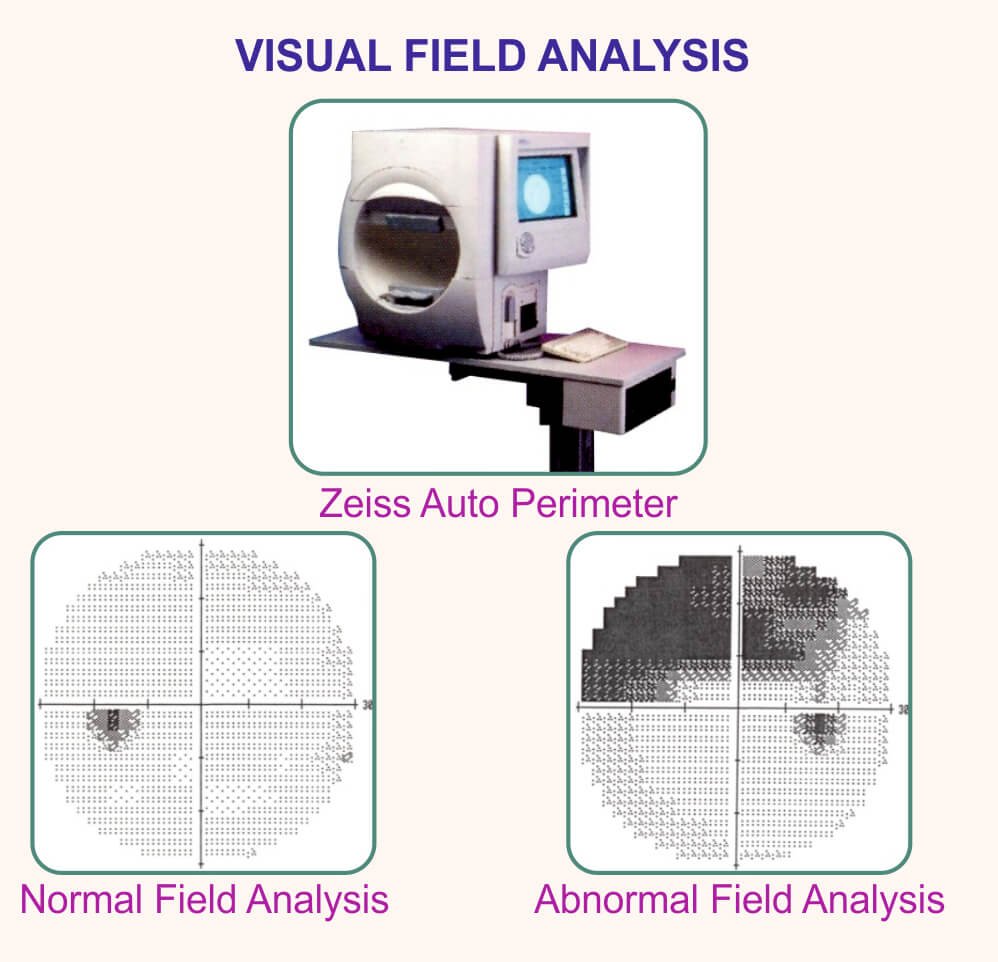Glaucoma
WHAT IS GLAUCOMA?
The contents of the eyeball are under some pressure (Intra-ocular pressure), which maintains the shape and functions of the eye. In certain situations this pressure may rise and be detrimental to the functioning of the nerve of the eye (optic nerve). This is called Glaucoma.
(Normal Intraocular Pressure 11-21 mm Hg)
Rarely, pressure may not be increased but still damage to the optic nerve occurs because of its increased vulnerability. This is called normal tension or low-tension glaucoma.
At what age does Glaucoma occur ?
Mostly glaucoma affect people in the fifth decade of their life or later but it can occur at any age. Glaucoma can occur even in young children and infants (Developmental Glaucoma). Glaucoma occurring before the age of 3 years it is called Congenital Glaucoma and between the age of 3 and 30-35 years it is called Juvenile Glaucoma. Treatment of glaucoma is more difficult in young patients and operation is required more often.
Types of Glaucoma
There are two types of Glaucoma
- Open angle
- Closed angle
The fluid of the eye (aqueous) circulates through anterior chamber and passing through the angle exits from the eye into the Canal of Schlemn.
In Open angle glaucoma the passage to the canal of Schelmn offer resistance to the flow of aqueous. In Angle closure glaucoma the angle of the chamber is narrow or gets closed preventing the drainage of aqueous from the eye. Both the situations lead to increase in intraocular pressure.

What are the signs & symptoms ?
Open angle type of glaucoma usually does not give rise to any symptoms in early stages. In late stages patients may feel pain in eyes and discomfort, and some individuals may notice field defects (inability to see certain areas of the field of vision). Usually this type of glaucoma is diagnosed in examination by an eye specialist either when he suspects it because of some risk factors or during the course of a routine examination.
Angle closure type of glaucoma can give rise to pain in the eye and headache with vomiting, seeing colored rings (haloes) around lights and redness in the eyes usually after coming out of a movie theatre. This type of glaucoma may occur as sudden attacks where there is severe pain in the eye, redness, watering, vomiting and blurring of vision.
Who are at the risk of developing Glaucoma ?
- Family history of glaucoma (especially in parents and siblings).
- Refractive errors (Myopia or Hypermetropia).
- Diabetes mellitus.
- Thyroid Diseases.
- Injudicious use of steroids especially steroid eye drops.
- Certain eye conditions e.g. Retinal Vein Occlusion, Pseudo exfoliation Syndrome, Pigment Dispersion Syndrome etc.
- Trauma.
- High B.P.
- Above 40 years of age 2% of the population has Glaucoma.
Tests to diagnose Glaucoma
- Examination of eye pressure (Applanation tonometry and non-contact tonometry)
- Examination of thickness of cornea (Pachymetry)
- Examination of angle of eye (Gonioscopy)
- Examination of optic nerve (Fundoscopy)
- Examination of visual field
- Examination of optic nerve using Infrared rays (O.C.T.)



How does it lead to blindness ?
Increase in pressure in the eye leads to resistance to the flow of blood into eye leading to damage to vulnerable parts especially the optic nerve, which carries the images to the brain. First it leads to some area of loss of visual field (the extent of surroundings visible to any one eye). This field loss progresses gradually till the eye is completely blind. Early field loss can be detected by test called Visual Field Charting / Analysis.



What is the treatment of Glaucoma ?
The treatment options of glaucoma includes :
- Drugs
- Laser
- Operation
The treatment is decided by many factors :
- Type of glaucoma
- Stage of glaucoma
- Existing damage
- Status of the other eye
- Response to the treatment already taken
- Patient compliance or reliability about taking drugs and follow up examination.
- Other risk factors
Decision regarding what treatment and when to be used should be left to the judgement of consulting eye surgeon.
Detected early and treated properly, glaucoma is perfectly compatible with life long good vision. If neglected it can end in blindness.





